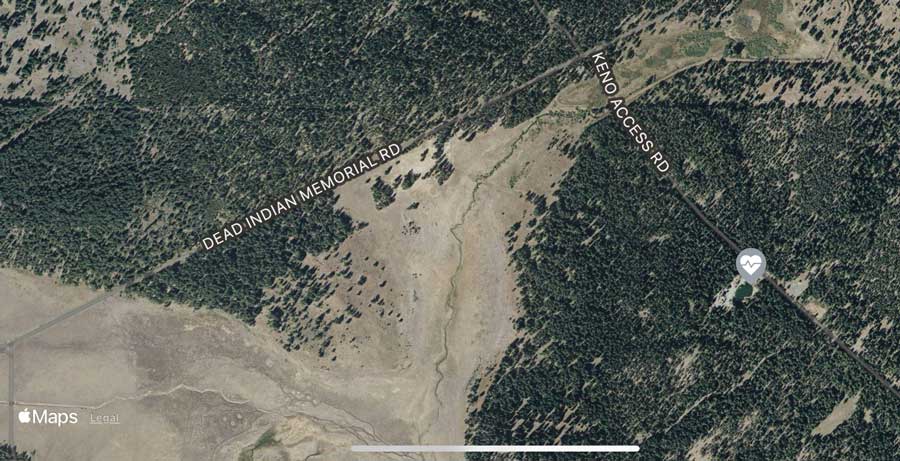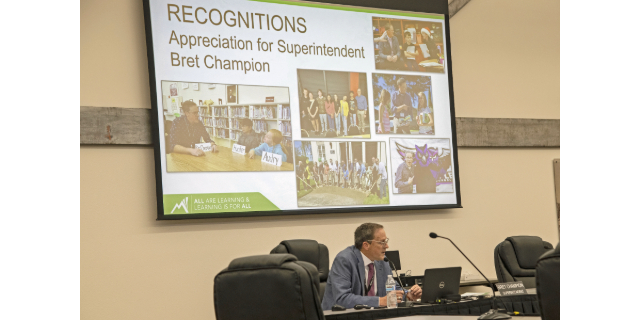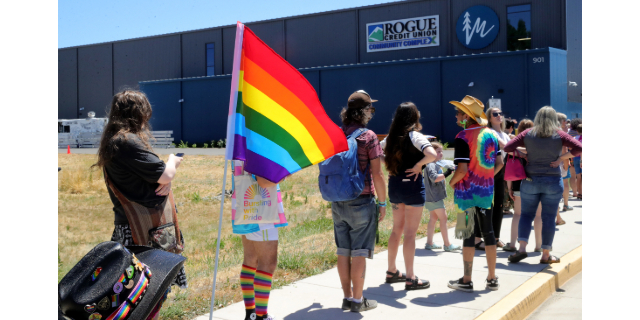Couple struggles to stay dry, warm in forest near La Pine
Published 4:00 am Sunday, November 20, 2022

- faces of homelessness
LA PINE — In the forest east of town, a group of nine individuals have parked their trucks and campers in a spot they call Camp Corona, so named for the sun, not the virus.
The encampment has a surreal, neighborhood-like feel, albeit with a muddy forest road instead of pavement and trailers and tarps instead of houses. The campsites are on Bureau of Land Management land, arranged around in a circle that resembles a cul-de-sac with a treed center, in which there’s a dart board affixed to a tree and a horseshoe pit.
This is where the Stutzmans — Patricia “Trish,” 59, and Walt, 51 — have camped for the past year.
The two moved from Creswell, near Eugene, to La Pine in 2007. They had been living on his father’s property before an argument between Walt and his father led to their eviction last year.
“We had to get out in 20 minutes,” Trish said. For a few weeks, they lived in their Jeep in a parking lot by Wickiup Junction, a nearby grocery store and gas station, “until some people came along, and they gave their fifth wheel up, brought it over here of course, and got us off the road,” she said.
“When we came here, everybody in the camp pulled together, and they got us cookware and brought us food,” Trish said, likening the encampment to a community.
The couple does not consider themselves homeless.
“We have nowhere to go,” Trish said. “We have a home.”
“We’re not unhoused,” Walt added. “We have a house — we have two of them.”
Homes are not without upkeep problems, though, and the couple is in the process of moving from the leaky fifth wheel to a small camper. They sat in the latter for an interview with The Bulletin, their breath visible despite a burner on the stove turned on for a modicum of warmth. Their 3-month-old pitbull mix, Blue, scampered about the fifth wheel.
Walt gets about using a wheelchair after recent surgery for a painful condition called spinal stenosis.
“It’s where the spinal cord is smaller than normal, and the bone chips in his neck were severing his spine,” Trish said.
“They were severing my spinal cord, squeezing it,” Walt said. Surgeons fused together four discs. For now, he goes twice a week to physical therapy and gets about camp using a wheelchair.
“It’s just another challenge, and it makes it something I can talk about,” Walt said. But Trish, who will have surgery for a hernia-related issue in December, wished aloud they weren’t experiencing health problems concurrently.
Neither of the two is working. In the past, Trish worked in food service, and Walt has worked as a carpenter, welder, mechanic and gas-station attendant.
“Whatever it takes,” he said. On Sundays, Trish and Walt often panhandle near Wickiup Junction. They keep anything of value locked up inside their campers, lest it be stolen by thieves.
They say they’ve been told by officials they can’t camp in the same spot longer than 14 days.
“Where are we supposed to go?” she said. “I already got a ticket. We’re homeless with no income, and they gave us a ticket for $280 because we were camping longer than we were supposed to.”
The Stutzmans say the number of homeless people is increasing around La Pine. Trish estimated there are 50 camps in the area.
But Colleen Thomas, homeless outreach services supervisor for Deschutes County Behavioral Health, puts the number of camps closer to 60. However, it’s difficult to identify individuals and families living unsheltered in remote and isolated camps away from services, she added.
David Fox, Behavioral Health’s homeless outreach case manager for Sisters and La Pine, has been working with dozens of individuals, including the Stutzmans, since February.
“It seems as though the more time I spend in south county (La Pine), the more I discover,” Fox said via email. “I have been able to connect with almost 40 unique individuals. Their camps and homes are scattered all across the forest. Some are hidden deep off of forest roads and some are right outside of town.”
He added that he believes he’s just scratching the surface of a growing problem.
“It is a slow process because it’s important to make contact in a safe manner. Some folks are not ready to meet with a public outreach case manager like myself for a variety of reasons. As time passes, I’m building trust with the community and the result is that people are more receptive to the services that we offer at DCBH. I hope we can continue to build connections and trust and as a result help folks that otherwise have been abandoned.”
People need to know about folks in their shoes, Trish Stutzman said. Because one day, it could be them facing cold nights and limited options.
“They have never been in our shoes, and they look at us (like) ‘Ew, look at that,’” Trish said. “You know what I say? ‘One day, you will be in my position, and when I see that sign looking for help, I’m going to stop, and I’m going to give you money.’”
Who are the real people impacted by skyrocketing housing prices, decisions about homeless shelters or plans to sweep informal camps? The Bulletin wants to offer insight by telling their stories through the series Faces of Homelessness. Every two weeks this year, Bulletin reporters will introduce readers to a different homeless person. We are here to tell their stories.
For suggestions on how to help the region’s residents experiencing homelessness, contact the Homeless Leadership Coalition by email at info@cohomeless.org.







